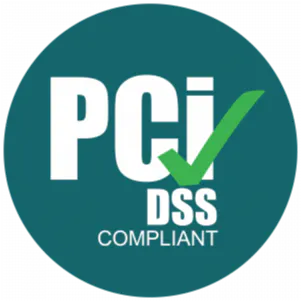Posted by Anne-Marie Avalon
May 31, 2023
Secrets management debt, the compounded burden of overlooked passwords, keys, credentials, and certifications, is like an unbalanced Jenga Tower threatening to collapse at any moment.
Imagine cybersecurity as a precarious game of Jenga, where every new secret added is a shaky block threatening the tower’s stability. Managing secrets debt can feel like extracting that critical Jenga piece from a tower without causing the entire structure to tumble. This precarious situation results from years of compounded technological inheritance, each layer adding additional instability to the tottering structure.
Discover why Secrets Management debt is the Jenga Tower of security. We will unravel the rise and impact of secrets debt, explore how to identify and manage it and understand the benefits of SaaS Secrets Management so you come out of this game winning.
The Rise of Secrets Management Debt
Secrets management debt, a phrase denoting the accumulation of oversight in managing digital authentication tools like passwords, keys, APIs, and tokens, is a time bomb whose threat grows with time. It’s a form of technical debt that appears when long-term security is compromised for short-term convenience.
In essence, it’s like building a Jenga tower where each ill-managed secret adds an unstable block, gradually leading to an inevitable collapse. This analogy is further strengthened by the striking data from GitGuardian’s 2022 report, which reveals the alarming reality of secrets mismanagement.
Let’s delve into the striking data from GitGuardian’s 2022 report
GitGuardian reveals that in just a single year, more than 10 million secrets were detected – these aren’t mere digits on a screen, but serious vulnerabilities within our digital systems. Furthermore, hard-coded secrets, the ones intricately woven into our system fabric, witnessed an increase of 67% compared to the previous year. Today, AppSec engineers juggle an enormous load of 3,413 secrets on average. And the ripple effect is evident, as three out of four organizations confessed to having a secrets leak in the past, with 60% of them experiencing significant complications as a result. In this game of cyber-Jenga, each secret adds instability to our digital tower, threatening to tip it over.
When the tower teeters on the precipice of collapse, it becomes crucial for our digital custodians, the DevOps teams, to hone their skills. Their proficiency in playing this metaphorical game will determine whether the tower stands tall or comes crashing down with the next block added.

Why is Secrets Management Debt the Jenga Tower of Security?
Each new app is like adding another block onto the tower. Every added process leads to an influx of credentials, introducing a whole new set of challenges to be managed by diverse teams.
These secrets can sometimes find themselves in less secure spots, a product of the trade-off between code efficiency and security. DevOps teams often prioritize rapid deployment over security checks, potentially introducing unnoticed vulnerabilities. Moreover, bypassing secure coding practices for code efficiency may result in less secure, albeit efficient, code. This doesn’t necessarily mean the tower will topple, but it does increase the risk. It’s not a question of the skill level of DevOps teams, but rather the inherent complexity of the task at hand.
Navigating this precarious tower of secrets requires not only skill but also an understanding of the accumulated “secrets debt” – the increasing burden of secrets that, if not managed effectively, could make the entire structure vulnerable to collapse, much like unchecked debt can bring down an economic system. This brings us to the impact of secrets debt.
The Impact of Secrets Debt
Failure to manage secrets effectively comes with a steep cost. DevOps teams now spend 25% of their time on troubleshooting and remediation due to secrets debt. If an AppSec engineer mishandles even one of the 3,413 secrets they manage on average, it could result in a data breach that costs USD 4.35 million on average.
Avoid Compliance Violations with Secrets Management
Negligence can lead to hefty fines and penalties due to violations of regulations such as in the case of GDPR below.
- Breach of Confidentiality: Negligent handling of secrets, such as encryption keys, passwords, or proprietary algorithms, can lead to unauthorized access and breach of personal data, thereby violating GDPR’s data protection principles. Any breach, whether accidental or intentional, can result in substantial fines and penalties
- Lack of Data Protection by Design and by Default: GDPR mandates that organizations implement data protection by design and by default. If an organization is negligent in the management of secrets and does not have the necessary measures in place to protect personal data (such as secure storage or strict access control), it would be in violation of this GDPR requirement.
- Failure to Report Data Breaches: Negligence in managing secrets could lead to an organization being unaware of a data breach, thus failing to report it in a timely manner. This could be seen as a breach of the organization’s duty of care.
Identifying Secrets Debt in 4 Steps
Realizing the gravity of secrets debt is the first step towards overcoming it. Let’s tackle it head-on with these four essential steps:
- Assess your existing approach to secrets management: Investigate how you currently store, manage, and rotate secrets, regardless of whether you have a centralized secrets management system or not. This will help you understand your current state and identify areas that need enhancement.
- Identify all locations of your secrets: Discover where you’re storing passwords, API keys, encryption keys, and other sensitive information. This includes not only centralized locations but also the different siloed secrets managers where secrets may be stored. Tools like GitGuardian or GitLab Secret Detection can be helpful in making this task manageable.
- Evaluate the security of your secrets: Thoroughly examine the strength of your passwords, the robustness of your encryption methods, and the effectiveness of your existing access controls. This will give you insight into the security level of your secrets.
- Formulate policies for secrets access: Establish a comprehensive policy that outlines who gets access to what secrets, under what circumstances, and how they should be using them. This step is crucial to control and monitor access to your secrets, hence reducing potential risks and vulnerabilities.
By following these steps, you can gain a comprehensive understanding of your secrets debt and take proactive measures to address it.
6 Steps to Taming Secrets Debt
Managing secrets debt can seem like a daunting task, but with a clear roadmap, the process can be significantly simplified. Here are five steps to get secrets debt under control:
- Acknowledge the Challenge: By adopting a collaborative approach and underscoring the shared responsibility of all relevant stakeholders, organizations can effectively address secrets debt and establish a more robust security posture.
- Devise a Game Plan with Akeyless Vault: This is your ultimate weapon against secrets debt. Your strategy should include enhanced secrets management techniques, such as centralizing your secrets in the cloud-based Akeyless Vault, adopting complex passwords, and implementing a regular secrets rotation schedule.
- Automate Secrets Rotation: Regular rotation of your secrets can help limit potential damage in case of a breach. Automating this process ensures its smooth and fail-proof execution.
- Eliminate Hard-Coded Secrets: Hard-coded secrets are like a treasure trove for attackers. Avoid these at all costs and replace them with dynamically accessed secrets stored securely.
- Implement Role-Based Access Control (RBAC): The principle of least privilege is key to secure secrets management. RBAC ensures that individuals only have access to the secrets necessary for their specific roles, which significantly reduces the potential attack surface.
- Periodic Review and Audit: Regularly review and audit your secrets management system to ensure it supports your policies and can be implemented across all environments and secret types. This allows for continuous improvement and adaptation to evolving security needs.
While tackling secrets debt is crucial, the shifting landscape of technology is offering new avenues for effective secrets management. One of these game changers is SaaS secrets management, such as that provided by Akeyless Vault, which promises a more streamlined, centralized, and robust approach towards securing secrets, thus heralding a new era in cybersecurity practices.
The Paradigm Shift: SaaS Secrets Management
Addressing secrets debt can often feel like navigating a complex game, where the stakes are high and the consequences of missteps can be significant. SaaS Secrets Management emerges as a game-changing solution in this context. It offers a range of compelling benefits, such as seamless deployment and scalability, along with reduced total cost of ownership. Most importantly, an easy-to-use, no-maintenance SaaS secrets management solution increases adoption across your organization, ensuring that your developers use your chosen security methods rather than create their own.
Conclusion: Conquering Secrets Debt and Embracing a Secure Future
In this blog, we’ve uncovered the alarming reality of secrets debt and its consequences. Secrets Management Debt is the Jenga Tower of Security as it has become increasingly complex, leading to potential vulnerabilities. But there is a solution. With Akeyless Vault’s SaaS Secrets Management, you gain easy deployment, stress-free maintenance, streamlined scalability, and reduced costs. Request a demo today to conquer secrets debt and build a secure future!
To learn more about the Akeyless Vaultless Platform, book a custom tour of the product today!
















